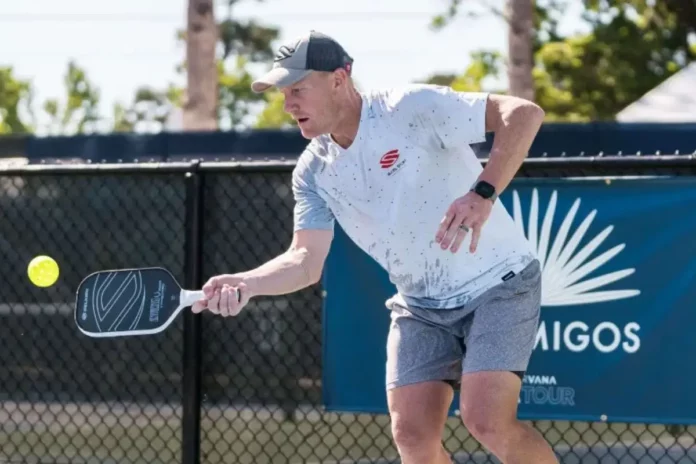John Cincola’s Serve Lag Technique: Professional pickleball player John Cincola shared valuable tips on Instagram about using “lag” in your serve. The technique, which involves letting the paddle lag behind the hand, can significantly improve your serve power and precision.
Lag in pickleball refers to the moment when the paddle stays behind the hand as the player begins to pull the handle forward. This creates potential energy, much like the whip effect, where the paddle snaps forward, delivering a more powerful shot.
The Key to Creating Lag
Cincola explains that the critical factor is not just placing the paddle behind the hand. Many players make the mistake of setting the paddle back manually, which doesn’t create the same energy. Instead, Cincola emphasizes that the lag should happen naturally as you pull the handle forward, allowing the paddle to lag behind and then whip forward with force.
Why Lag is Important
Using lag in your serve can dramatically improve both the power and control of your shots. By creating more potential energy, players can execute faster, more accurate serves that put pressure on opponents. This technique can give players a competitive advantage, making it a valuable skill to master.
What’s Next for Players?
Cincola’s advice is a game-changer for anyone looking to improve their serve. Practicing the natural lag motion, rather than manually positioning the paddle, can lead to faster and more effective serves. As players incorporate this technique into their game, they’ll be able to add a new layer of power and precision to their serves.
News in Brief: John Cincola’s Serve Lag Technique
Professional pickleball player John Cincola shared expert advice on using “lag” in serves to enhance power and precision. The technique involves letting the paddle lag behind the hand before snapping forward naturally, creating potential energy for a more powerful shot. Cincola emphasizes that forcing the paddle back manually doesn’t generate the same effect. Mastering the natural lag motion can significantly improve serve speed, spin, and overall performance on the court.
ALSO READ: John Cincola’s Power Serve Technique That Will Change Your Game

